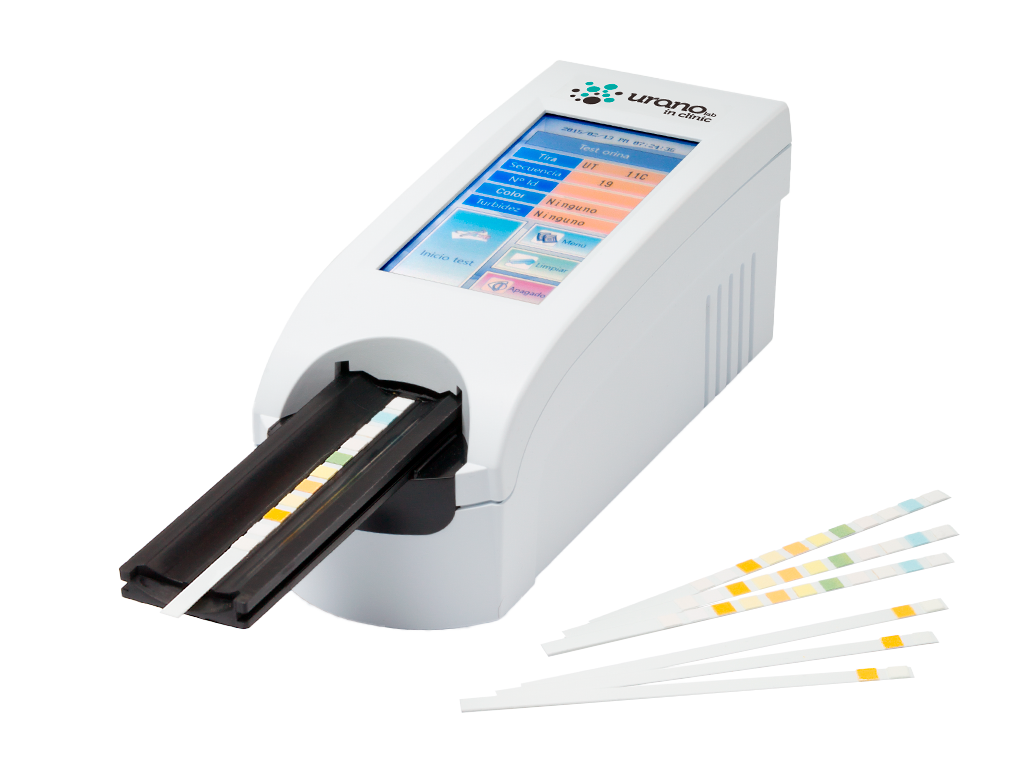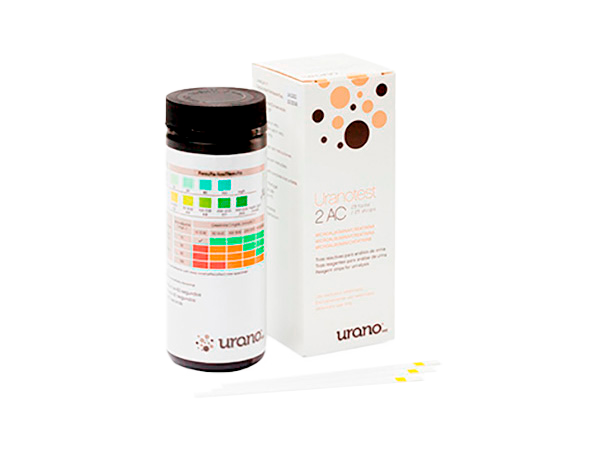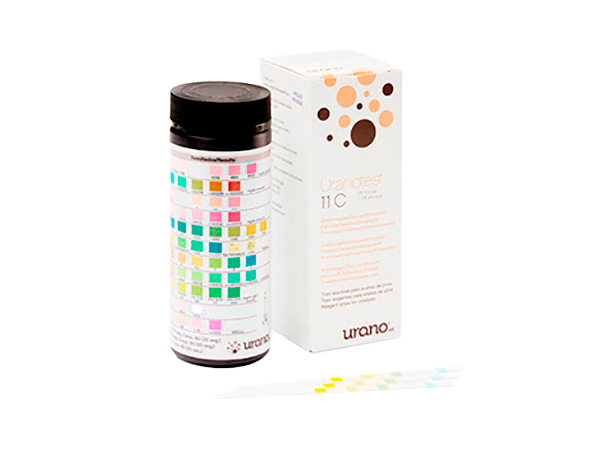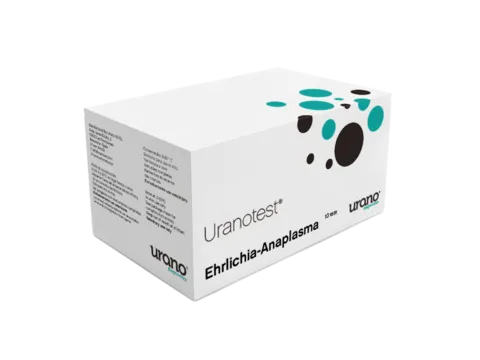
Diagnostic tests
Uranotest® Ehrlichia-Anaplasma
Detection of Ehrlichia canis and Anaplasma antibodies in blood, serum and plasma
Test available for reading in the Uranotest® Smart Reader app.
Specs
- Purpose
Simultaneous detection of antibodies against Ehrichia canis and Anaplasma
- Sample
Whole blood, serum, plasma
- Sensitivity
- Ehrlichia 95 % versus IFI
- Anaplasma 96 % versus IFI
- Specificity
- Ehrlichia 95 % versus IFI
- Anaplasma 96 % versus IFI
- Reading time
15 minutes
- Presentation
Boxes with 5 or 10 tests
Characteristics
- It detects Ehrlichid and Anaplasma separately for the best diagnostic and prognosis.
- Precise capillary tube incorporated to dispense an exact volume of the sample.
- Simple 2-step technique: save time and prevent mistakes.
Information for the veterinarian
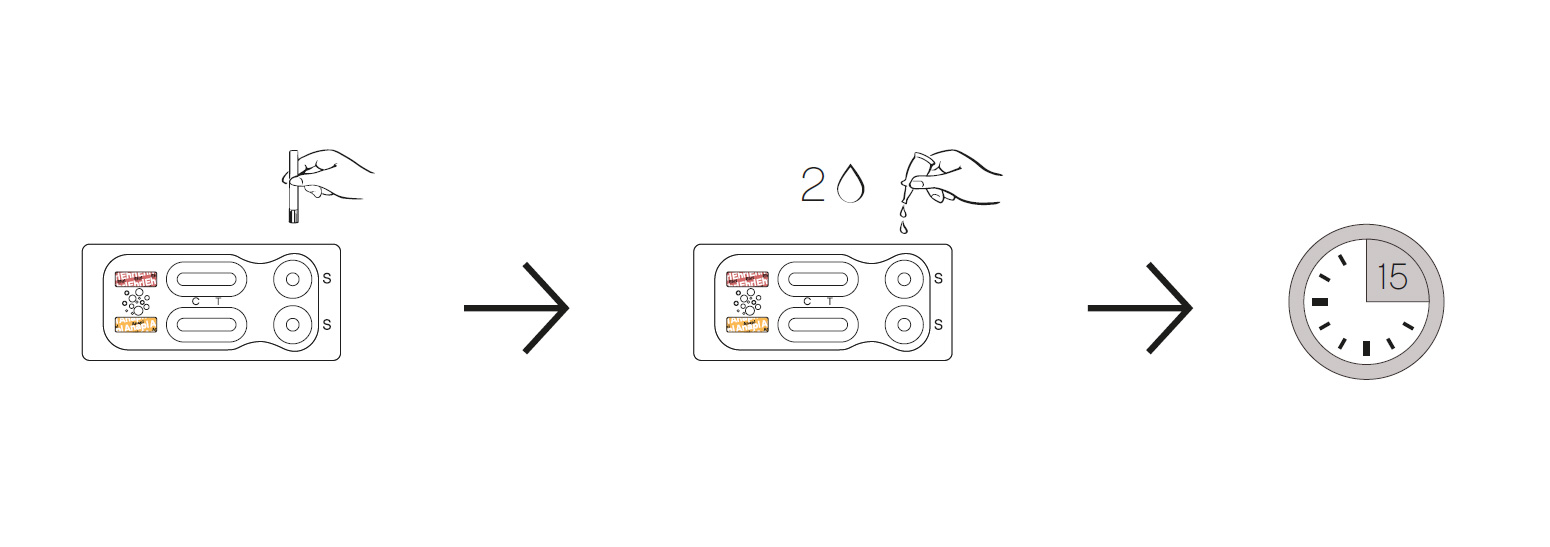
- Remove the test device from the protective pouch and place it on a flat and dry surface.
- Take the sample with the capillary by pressing below the flattened end. When you stop pressing it, the volume will reach the black line marked at the end.
- Add the amount provided by the capillary on the Ehrlichia sample well.
- Add 2 drops of buffer solution on the Ehrlichia sample well (Developing buffer)*.
- Repeat exactly the same procedure for the Anaplasma sample well.
- Read the results within 15 minutes. After this time, the result is not valid.
Frequently Asked Questions
The detection of Ehrlichia canis and Anaplasma antibodies in circulating blood separately for a better diagnosis, prognosis and epidemiological knowledge.
No, it is important to use a 10 micro-litre drop of sample, which you can only do with the aid of the disposable precision microcapillary supplied in the kit.
Unless working with calibrated pipettes, the size of a drop can hugely vary according to the density, the type of disposable pipette used, etc. For diagnostic purposes, a generic drop of blood is not the same as a 10 micro-litre drop of blood.
Take the capillary at the middle, between your index finger and thumb. The black band must be at the end that will enter into contact with the sample. Lightly apply pressure, and upon releasing, it will absorb the 10 micro-litres necessary for the test.
Apply pressure again to deposit the drop on the pad.
Yes. You may use any other tube with anticoagulant treated with heparin, citrate or EDTA or with anticoagulant, if what you wish to do is use serum as a sample. The kit includes tubes with EDTA for your greater comfort and savings, but you may use any other one.
You should proceed as if it were for any other laboratory procedure.
The whole blood must be kept refrigerated at between 2ºC and 8ºC for no more than 24 hours. It should never be frozen.
If you are not going to be able to use it before 24 hours, separate the plasma by centrifugation or the serum by sedimentation, and you may keep it at between 2ºC and 8ºC for up to 72 hours. To preserve it for longer, freezing is recommended.
No, as with any other diagnostic procedure, you must wait until it reaches room temperature. If want to speed this process up, hold the tube between your hands. Many veterinarians do not take this circumstance into account, and incorrect temperature is one of the most frequent causes behind false results.
At 15 minutes, you can read with total reliability.
20 minutes after doing the test, degradation and diffusion of the colours on the strip may occur. This does not happen with all tests, but the recommendation is that the test should always be repeated if the reading was not taken before the indicated time, since this may lead to an erroneous interpretation.
A positive test indicates that there are antibodies against E. canis in circulating blood, which is evidence of previous contact with this pathogen.
Just as with any other laboratory procedure, a definitive clinical diagnosis should not be based only on performing a test, but on the ensemble of a series of clinical and laboratory findings.
In the case of Ehrlichiosis, the presence of thrombocytopenia, leukopenia and anaemia are especially significant. These are laboratory findings which, along with performing the Ehrlichia test, confirm the disease.
If this is the case, we recommend that you verify the following points:
- If the test was performed with a very hemolysed blood, serum or plasma sample, or with lipemia, that may have interfered in the reaction.
- If a blood, serum or plasma sample that was kept cold and not brought up to appropriate room temperature was used.
- If the test was kept in the refrigerator and was not warmed up properly.
- If the aluminium envelope containing the test was open.
- If expired tests were used.
- If the test was not left in horizontal position before reading the results.
Our recommendation is:
- 1st Repeat the test, carefully following instructions to discard improper execution.
- 2nd Request or perform complementary tests (blood count, biochemical profile, etc.).
- 3rd Contact our technical assistance staff to report your case, analyse it and investigate possible causes.

Uranotest® Ehrlichia-Anaplasma

